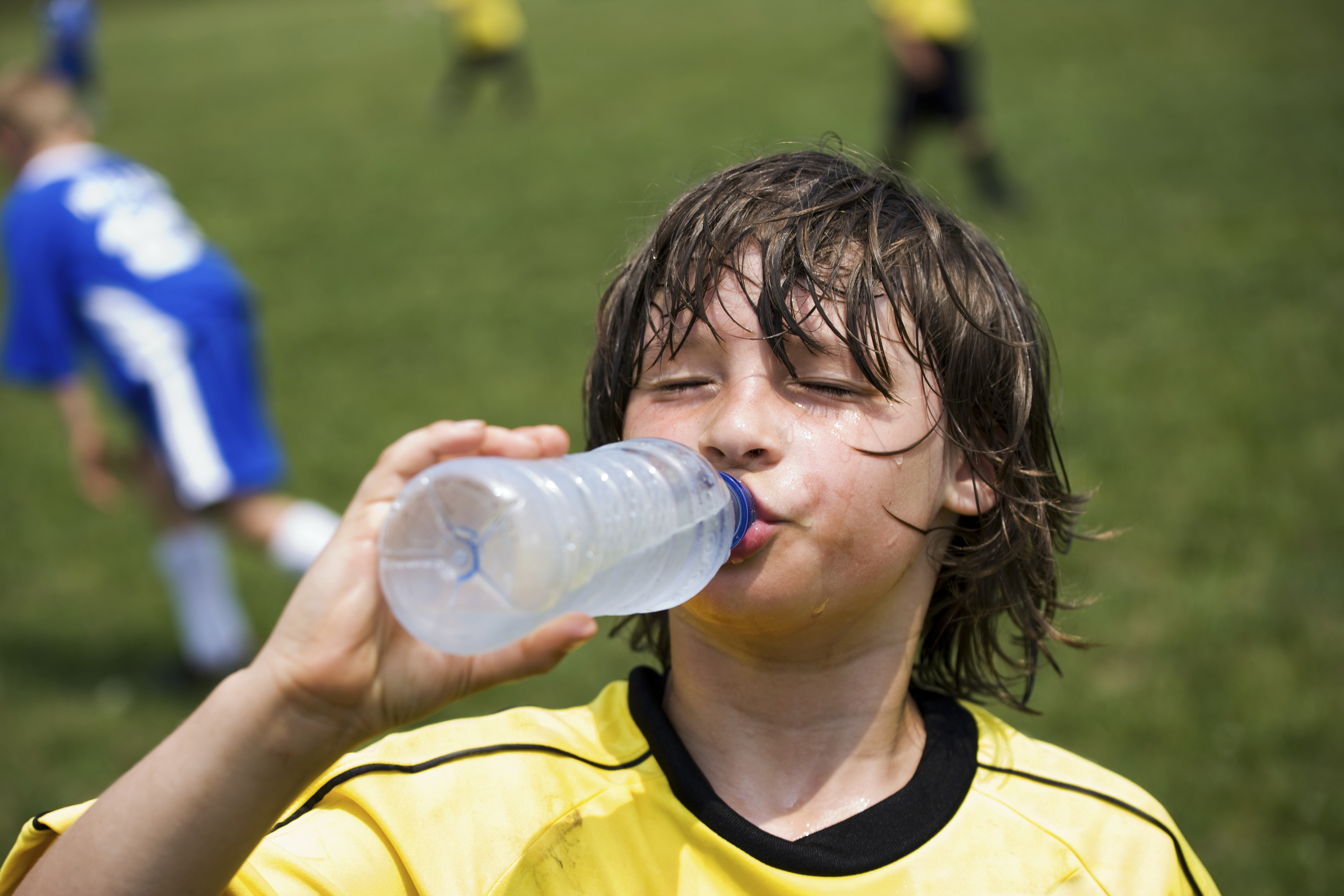
Several summers ago, I picked up my 11-year-old son from soccer practice in 90-plus degree heat and he looked like hell. Flushed-face, sluggish, nauseous. He didn’t have a fever and claimed he was fine, just thirsty. After all, the team trainer had run them hard for an hour and a half without a single water break. The red haze descended: Not a single water break?!
When I confronted the volunteer dad coaching the team and working with the trainer, he explained the trainer’s philosophy was to simulate a 90-minute game with no water breaks. I countered that in games, there is in fact a halftime break and that making 11-year-olds go even 45 minutes with just one water break was stupid.
After some back and forth, he agreed that maybe a new philosophy on hydration could be introduced to our trainer, one that recognizes that heat sickness of any form can be very bad news, as I saw looking at my son that summer day.
What you need to know
According to the Mayo Clinic, exertional heatstroke — the kind brought on by intense physical activity in hot weather — is most likely to occur if the person is not used to high temperatures. Besides being dehydrated, my son was not as acclimated to the heat as if he may have been living in another part of the country.
That’s not surprising. I’ve never heard where Goldilocks supposedly lived, but it could have been the Pacific Northwest. Like her favorite porridge, we’re typically not too hot and we’re not too cold.
Being on the outside of the so-called “heat dome” that covers much of the U.S. this summer, we in the upper-left may fall out of practice when prepping our kids for workouts in the heat. Just as Seattleites are not the best drivers in the snow (c’mon, let’s be honest), we can also use the occasional reminder of how to stay safe when the mercury spikes. Add to that NASA’s recent news that global temperatures in July 2016 were the hottest on record, and that the trend will likely continue.
So we need to be informed about heat-induced ailments. Heatstroke is the worst of all heat-related syndromes. It can cause organ damage or even be fatal. Heat exhaustion is not as serious, but still requires attention. To the right, see the Centers for Disease Control and Prevention’s guidelines for spotting the difference as well as treatment options. The most important information: If heatstroke is suspected, call 9-1-1 immediately.
What you can do
With fall sports teams launching into more intense practices, what’s the best way to keep your athletes safe in the heat? If you can control workout times, have them exercise earlier or later in the day to avoid midday heat.
Also, have your children wear hats to keep the sun off their heads, but don't overdress them. Wearing excess clothing can prevent sweat from evaporating and cooling their bodies. My husband has memories of two-a-day football practices in the Michigan heat in full pads.
If you find yourself in such a situation, hydration is particularly critical. The CDC recommends from two to four cups of water every hour while exercising outside. While athletes should avoid sugary drinks, sports drinks can help restore the electrolyte balance upset by losing salt through sweating.
Issaquah mother Sandy Clark-Bolt, a competitive runner and soccer player, knows enough about workouts in the heat to prep her 9-year-old son, Drew. When his soccer team recently traveled to Bend, Oregon, for a tournament in 100-degree weather, Drew was as ready as he could be. He’d been drinking plenty of water the entire week leading up to the tournament.
Having suffered heat sickness herself while training for a marathon in Las Vegas, Clark-Bolt knew the conversations to have with her son. “For instance, I talked to him about what it looks like when he goes to the bathroom,” she says. "If urine is bright yellow, he needs more water so it’s clearer.”
On the field, find ways to cool your kids while they play. Fall City mom MariaJose Coca’s 14-year-old son Daniel is playing soccer in Madrid, Spain, for a year. Beside wearing hats more often, Daniel and his teammates take advantage of the many fountains around Madrid’s playing fields, Coca says. An alternative: Keep a cooler with towels soaking in ice water on the sidelines for the kids to use if they feel overheated.
Heat exhaustion: symptoms and what to do
Symptoms: Heavy sweating; weakness; skin cold, pale, clammy; weak pulse; fainting and vomiting
What to do: Move to a cool location; lie down and loosen clothing; apply cool, wet cloths to body; sip water; if you have vomitied and continue to do so, seek medical attention immediately
Heatstroke: symptoms and what to do
Symptoms: High body temperature (above 103 degrees Fahrenheit); hot, red, dry or moist skin; rapid and strong pulse; possible unconsciousness
What to do: Call 911 immediately; move to a cool location; reduce body temperature with cool cloths or bath; do NOT give fluids











